EXCLUSIVE: Louis Vuitton Extends Contract of Nicolas Ghesquière
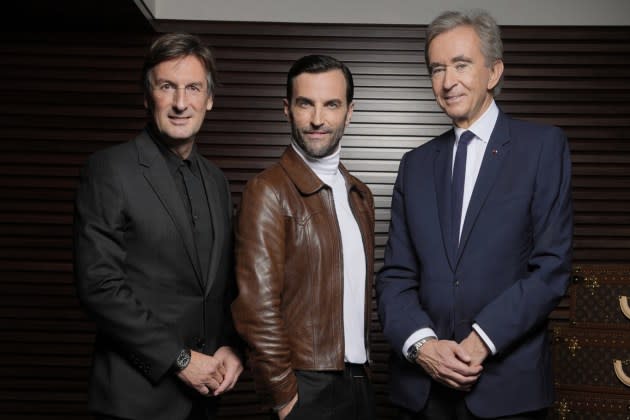
In a sign of continuity at the world’s biggest luxury brand — and recognition of his significant contribution to its impressive growth trajectory — Louis Vuitton has renewed the contract of Nicolas Ghesquière for another five years, WWD has learned.
The development comes as the designer marks his 10th anniversary as the brand’s artistic director of women’s collections.
More from WWD
Pharrell Williams' Black Ambition Announces 2023 Prize Winners
LVMH Celebrates Cultural Exchange at the Sixth Edition of CIIE in Shanghai
“I’m very happy, and also very honored for this trust,” Ghesquière said, confirming the contract extension in an exclusive interview. “Of course, it’s very fulfilling to see the achievement of 10 years being transformed into a new chapter.”
It marks the second big decision for Vuitton’s new chairman and chief executive officer Pietro Beccari, who shortly after assuming the management helm last February named U.S. musician and entrepreneur Pharrell Williams as creative director of Vuitton’s menswear division.
“I think Nicolas is one of the best talents in terms of creative direction,” Beccari enthused in an interview. “He is very directional, able to anticipate the future, to understand trends and to create trends, which I think a market leader should have. And on the other side, he has a deep knowledge of the brand — of its icons, of its history.”
Beccari also touted Ghesquière’s proven track record of creating hit leather goods, from the Petite Malle he introduced with his debut show for fall 2014 in the Louvre’s Cour Carrée to the recently relaunched GO-14, a shoulder jewel he first designed back in 2014 and remastered for the fall 2023 runway last March.
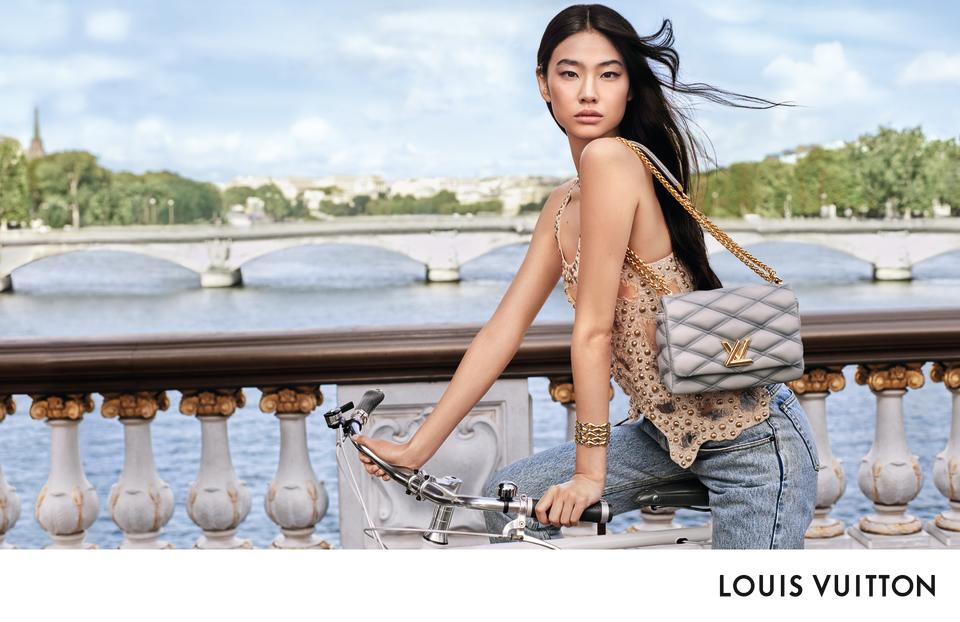
The GO-14 is prominently featured on the shoulders of “Squid Game” star HoYeon Jung and actress Deepika Padukone in Vuitton’s latest ad campaign. A tribute to the maison’s master trunk-makers, the quilted bag reprises the cross-hatched “malletage” technique found inside the lids of archival trunks.
While French luxury giant LVMH Moët Hennessy Louis Vuitton does not provide revenue breakdowns for its galaxy of more than 70 brands, it is understood that revenues at Vuitton have tripled since Ghesquière joined in 2013 after a 15-year career catapulting Balenciaga to the forefront of the Paris fashion agenda.
According to market sources, under Ghesquière’s creative leadership and the management of Beccari’s predecessor Michael Burke and Burke’s second-in-command Delphine Arnault, annual sales of women’s ready-to-wear multiplied by more than five.
The same sources estimated that annual sales of shoes and leather goods from Ghesquière’s runway collections have grown fourfold, with half of the top-10 sellers in footwear hailing from the wardrobe the designer has been building.
Known for his exacting, couture-like approach, and an experimental zeal rare among designers at Europe’s largest luxury brands, Ghesquière has unleashed a host of accessories that have become permanent products.
Among the bags are the Twist, Petite Boîte Chapeau, Palm Springs, Cannes, Dauphine, Coussin, Loop, Side Trunk, Camera Box and Atlantis models, while recurrent footwear styles include Archlight sneakers, Beaubourg ankle boots, Star Trail ankle boots and puffy Pillow boots.
In the interview, which took place in a hushed suite at the Ritz hotel, Ghesquière noted that he conceives handbags and shoes as integral elements of his fashion silhouette, recognizable by such items as patchwork leather jackets, varsity jackets and unique trouser styles. “It’s not separate elements that are styled together,” he stressed. “In terms of designing, we think about it all together; we make everything with the same intention and the same passion.”
Beccari described Ghesquière as a true designer and couturier who sketches everything by hand. “There are not many that are able to do that,” he said. “Also, he’s French and embedded in the French culture, like Louis Vuitton is.”
Indeed, Ghesquière has long been the go-to designer for style icon Brigitte Macron, the first lady of France, and he also created the costumes for a new production of 1970s French rock opera “Starmania” — arguably the most famous and successful French musical of all time. Its second Paris engagement kicks off Tuesday at La Seine Musicale and runs through Jan. 28.
Meanwhile, Beccari described Williams as a quick study in fashion with a “great sense of trend, and a great sense of aesthetics… but not a couturier.”
“So I think the mix of the two [talents] is an explosive one,” he said. “I am very proud of having this incredible couple of creative directors, and I’m happy to do another five years with Nicolas and show the world what we can do together.”
To be sure, Beccari wasted little time expanding Ghesquière’s remit and adding a pre-fall destination runway show, the first unfurling at a monumental event staged on the Jamsugyo bridge in Seoul last April.
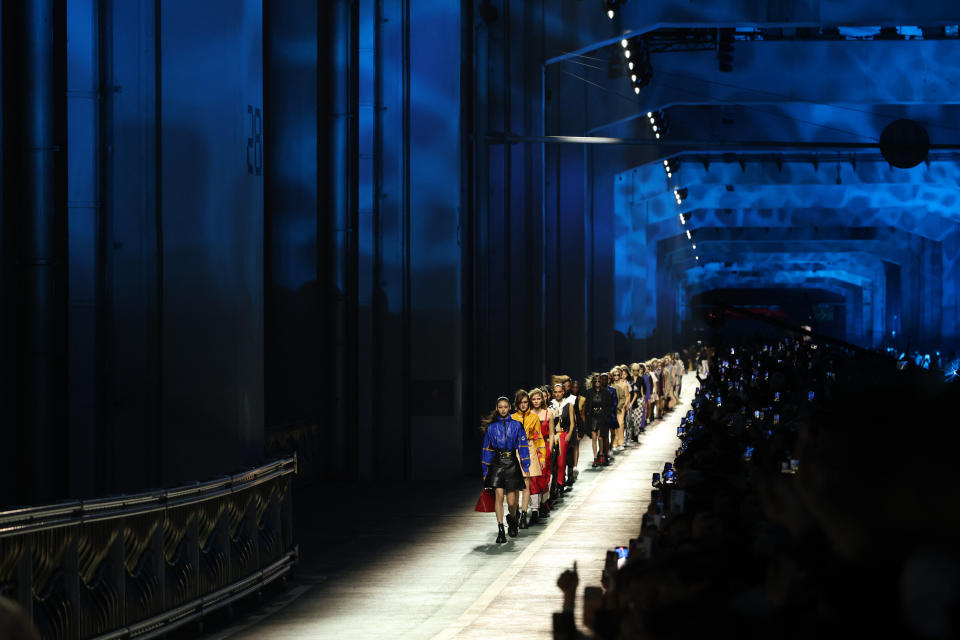
“That’s one of the genius things about Pietro — to think outside the box,” Ghesquière said, recounting that when Beccari discovered his pre-collection in the studio, he decided on the spot that it deserved a huge spotlight.
“For me, it was a very exciting experience,” the designer related. “It made me feel good because those pre-collections are not less than other collections. They just didn’t make it to the catwalk.”
Beccari lauded Ghesquière’s ability to “put things on the catwalk that may not be immediately understood because they are too soon, but then they become a trend.”
As an example, he mentioned how Vuitton’s cruise 2017 show in Rio de Janeiro anticipated the convergence of sport and athletic elements in women’s fashion.
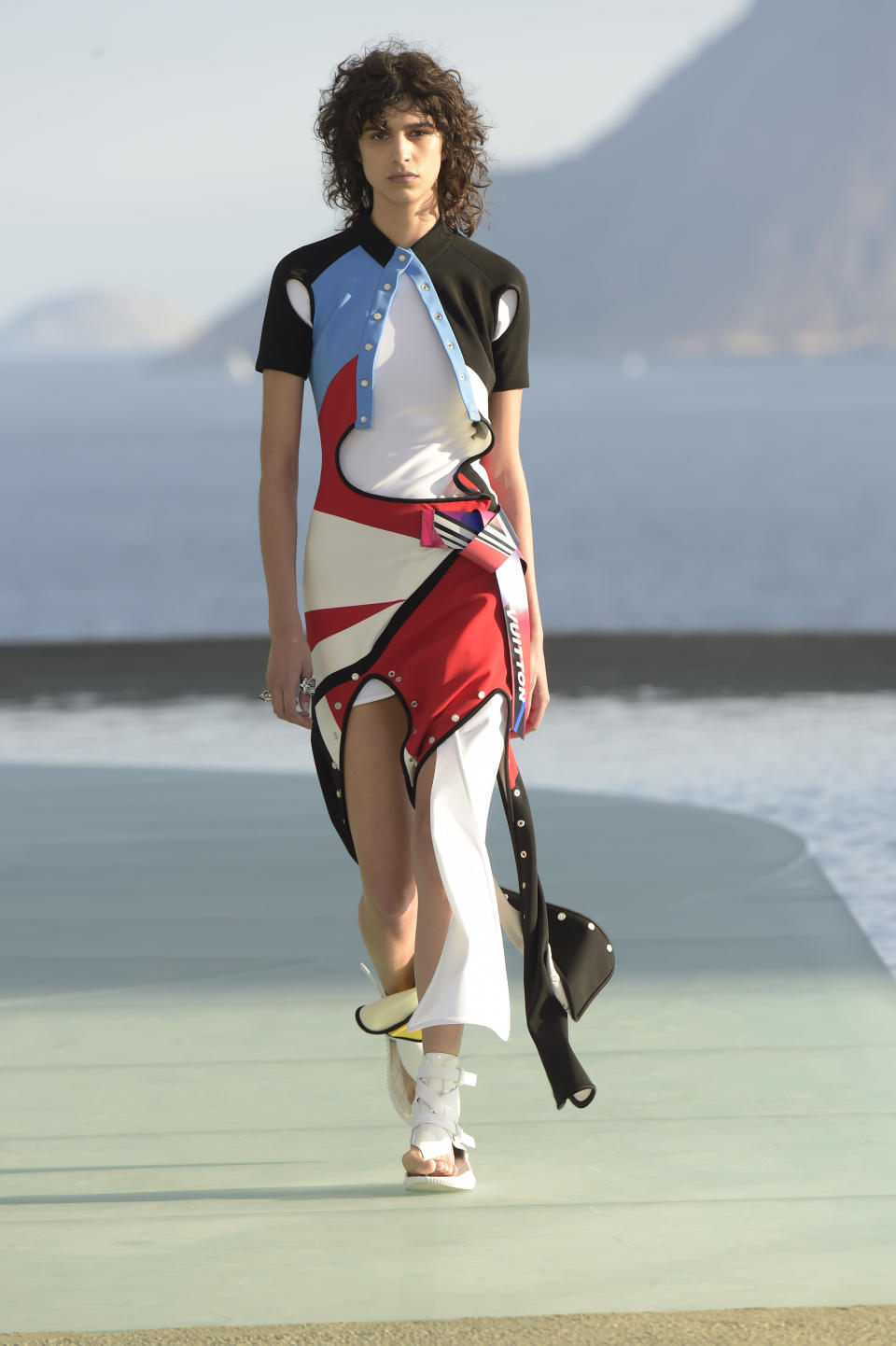
Beccari also touted Ghesquière’s sense of detail, which he compared to that possessed by the late, great Karl Lagerfeld, with whom he worked when he was CEO of Fendi in Rome from 2012 to 2018.
“Nicolas is very detail oriented and almost a maniac of perfection,” he said, also mentioning his “deep knowledge of materials and textiles.”
Asked if he put any creative or business imperatives before Ghesquière as the designer enters his second decade designing for Vuitton, Beccari said, “What I’ve learned is that creative people should be put in conditions that allow them to give their very best. If there’s one thing I think I do well is to create such conditions, ensuring good vibes and good energy to let free their creativity.
“That’s our role, to make them feel at ease, to feel supported, trusted and able to express their creativity,” he continued, describing commercial success as a shared responsibility. “For me, the creative director is a partner in a very important adventure because we are carrying the weight of the biggest maison of the group.
“We are very ambitious for Louis Vuitton women’s. We are both full of great hope, and great ambition,” Beccari added.
The executive, who previously put Dior on a stupendous growth trajectory, described himself as a “very present CEO” who meets with each of Vuitton’s creative directors at least three times a month.
Ghesquière described their rapport as “very direct, and very easy as he is one floor above me. He can show up in my office, I can show up in his — it’s as simple as that. So the communication is really constructive and creative… His demands are really inspiring, and interesting.”
“I am a team player and an orchestra director, and I like people to contribute and to be happy for the success of the business,” Beccari said. “I’m happy to have secured the greatest talents for Louis Vuitton and I’m quite optimistic about our success for the future.”
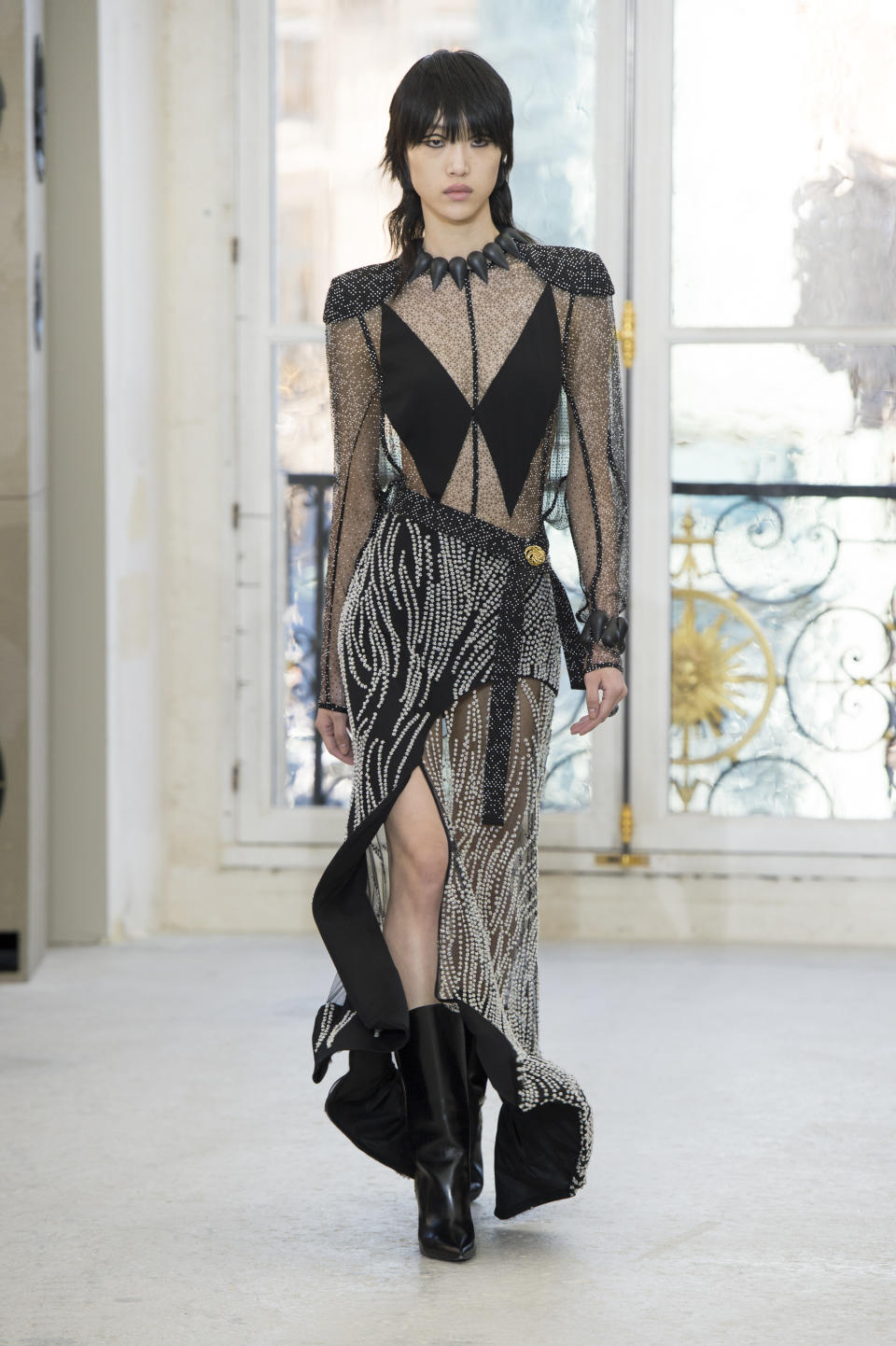
Over an hour-long conversation, Ghesquière reflected on his first decade at the brand, and stressed the value of a long tenure in an industry prone to musical chairs. (A recent WWD analysis of designer appointments showed that half the creative directors at roughly 40 houses have been in their positions for five years or less.)
“I think it takes time to build codes, to build an aesthetic — to solidify a style beyond fashion,” Ghesquière told WWD. “That’s certainly what makes the difference at Vuitton, those values, that vision from the group management to make sure we are hitting the season with great fashion shows and a great presentation, but more than everything building longevity — in the trust of the clients, in the trust of everyone… It’s great that we are sharing this commitment of working together long-term.”
In his view, Vuitton remains “full of possibilities” as its fashion history is relatively short, allowing him to “participate in writing a new aesthetic.”
Ghesquière is only the second designer to lead Vuitton’s womenswear after Marc Jacobs, the American designer conscripted in 1997 to bring the company into the modern fashion age and introduce ready-to-wear, shoes, fashion jewelry and eyewear to a brand that had been known primarily for luggage and handbags.
“The world of Vuitton is very rich,” Ghesquière said of the house, established in 1854 and famous for its monogram canvas and legacy of creating products for travel as it evolved from steamships to cars and jets.
The designer said he often mines the archives of Vuitton, and fashion history, too, as he imagines new directions for fashion.
“To build great fashion for the future, you have to look at the past very carefully,” he said, stressing the need to understand how social transformations were reflected in how people lived and dressed.
Asked about his proudest achievements at Vuitton so far, Ghesquière mentioned initiating destination cruise shows, the first in 2014 at Palace du Palais, Monaco.
“The brand has so much credibility in traveling with collections,” said Ghesquière, who has orchestrated each cruise show around an architectural marvel — buildings by John Lautner, Oscar Niemeyer, I.M. Pei, Joseph Lluis Sert, and Eero Saarinen, to name a few — or a stunning garden.
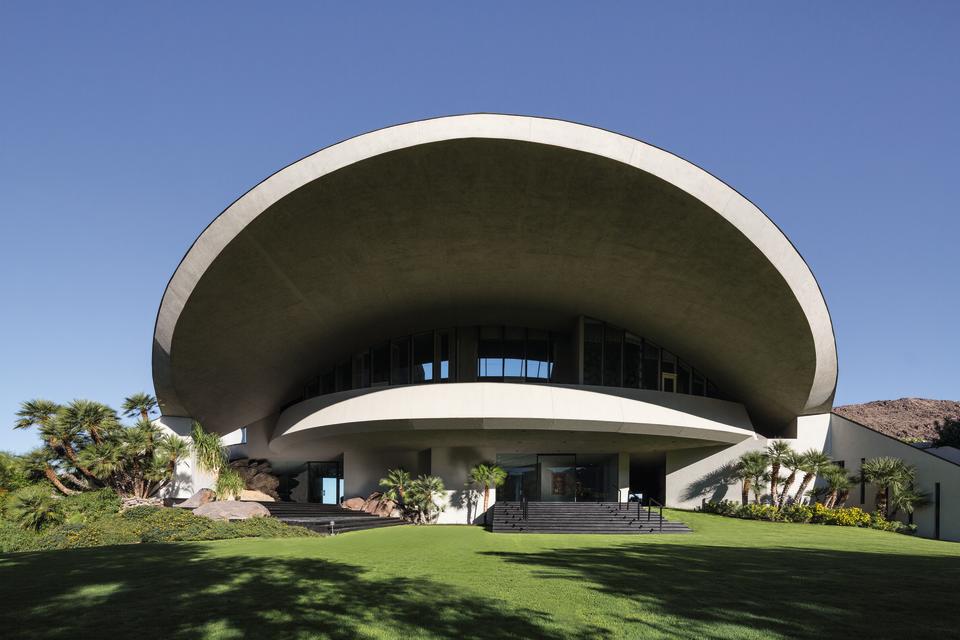
Ghesquière also said he’s proud that the silhouette he’s developed at Vuitton is now very recognizable.
“It’s an interesting achievement that we will improve, develop and make even stronger for the next year,” he said. “There is a strong intention to develop what we did for the last decade — to consolidate and develop the new elements and the new codes that we created.”
The designer paid tribute to the “strong team” around him, most of its members having also logged a decade or more at the house. “That shows a lot that I’m not the only one to be committed in that mission, that we really share that that passion for the house and for creating new elements for the house.”
Hailing from the small French town of Loudun and without any formal fashion training, Ghesquière got his start in fashion by filing, photocopying and cataloguing fabrics at Jean Paul Gaultier, ultimately landing at Balenciaga and designing lowly licensed lines, including office uniforms, bridal gowns and widows’ dresses for Japan.
Once promoted to the helm of Balenciaga’s main rtw line in 1997, he quickly won acclaim for sculpted designs straddling futuristic and Parisian chic. For three seasons he also designed collections for the Milan-based house of Callaghan.
In the interview, Ghesquière said he recognized very early in his career that fashion stood at the crossroads of many creative realms, including fine art, film, music and theater. Hence his freewheeling artistic collaborations during his first decade at Vuitton, including ones with artist Phillipe Parreno, fashion editor Grace Coddington, costume designer Milena Canonero, filmmaker Hwang Dong-hyuk and musicians Woodkid and Sophie.
The designer stressed that the job of creative director has changed dramatically since he first started, now requiring him to not only create new fashions but also an atmosphere, moment and narrative that can carry through into store windows and environments, client experiences, communication campaigns and the culture at large.
A good example of the latter would be his fall 2020 show for Vuitton, titled “If the Past Could Look at Us” and staged against a tableau of 200 characters dressed in costumes spanning five centuries. It foreshadowed a Vuitton-sponsored exhibition at the Costume Institute at the Metropolitan Museum of Art in New York, “About Time: Fashion and Duration,” that elaborated on the theme of temporality.
“It’s very impressive because you become — with great help — a bit of a director, a bit of a producer of entertainment, a bit of a writer, a bit of a musical expert,” Ghesquière mused. “It’s great, because I’ve learned so much beyond designing clothes, bags and shoes and other things about how to deliver a message through this special moment.
“What is exciting and rewarding for me is that constant quest to make a relevant proposition,” he added. “You have to take risks.”
In case you were wondering, the gong that sounds outside of each of Ghesquière’s Vuitton shows is meant to signal the start of the “experience,” functioning as a countdown to a unique live performance. “I love this idea that the fashion show is something very unique in a very precise moment,” he said.
By now, Ghesquière is known for his inventive mixture of historical designs and futuristic, science-fiction elements that he likes to call “time clash.” A famous example was when he paired 18th-century embroidered redingotes with athletic shorts and sneakers for Vuitton’s spring 2018 collection.
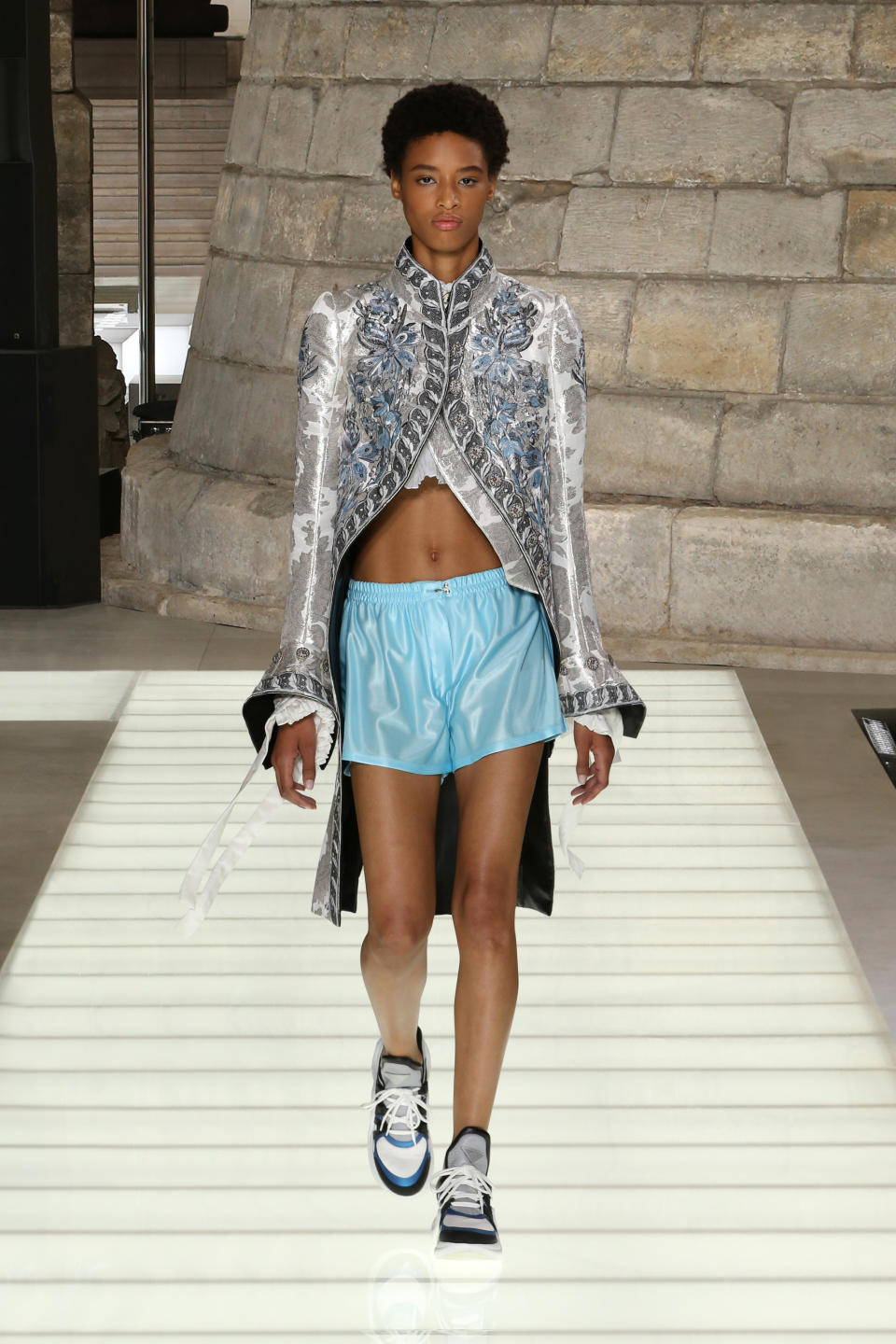
The designer has also assembled an eclectic cast of Vuitton ambassadors, which reflect his pluralistic approach to womenswear and his belief in continuity and loyalty, considering the likes of Jennifer Connolly and Emma Stone have been associated with him for ages.
It’s his conviction that celebrities choose Vuitton as much as the brand chooses them. “I also love all the dialogue we have together about their projects, or projects together like when Alicia Vikander asked me to design the clothes for ‘Irma Vep,’ for example,” he said. “LV is also a big house. So it’s beautiful to have a multiple representation of people.
“A sense of individuality is very important for our ambassadors. They’re not all the same, and they don’t look all the same, and we don’t dress them all the same,” he added. “I think it’s more sophisticated for LV to make individuality shine, while keeping a very strong style. It’s easier said than done.”
When the designer joined the house back in 2013, LVMH chairman and CEO Bernard Arnault made clear that one of his missions was to create new bags and fashion elements that could become “part of the modern patrimony of LV.”
Ghesquière recalled showing Arnault his sketch for the Petite Malle, a miniature version of Vuitton’s iconic trunk with similar hardware and savoir-faire, and explaining the concept behind it.
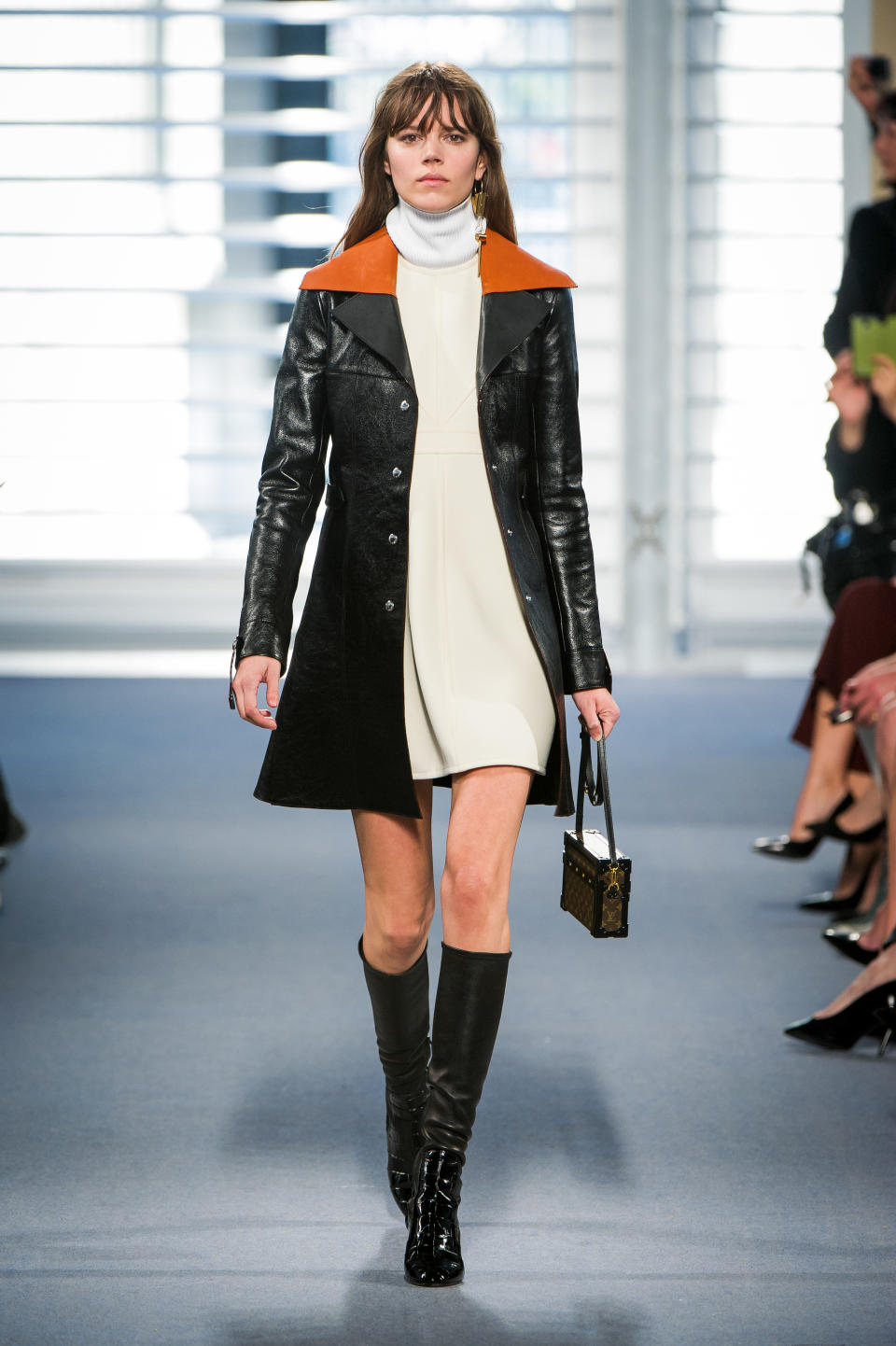
Immediately Arnault envisioned a wall with multiple shelves devoted to displaying the little trunks in different colors, telling Ghesquière, “We’ll make it something very iconic for the future of Louis Vuitton.”
“That says a lot, because for everything — creating campaigns, creating products, creating shows — he’s always there to listen, to share and, of course, give his opinion. And that is something that I appreciate, his respect for the designer,” Ghesquière marveled. “His love for art, and his love for creation, it’s truly incredible. He has a vision that is very intuitive, and very forward-thinking, sometimes beyond your own vision, which is very stimulating.”
Asked if he finds intimidating the scale of Vuitton and its importance to the group’s fortunes, the designer acknowledged that the pressure of expectation is strong.
Yet after returning from a swing through China, and witnessing the passion and dedication of store teams, he feels heartened. “It is intimidating, but I don’t feel alone in that situation. I feel responsible, but there are hundreds of talents around me.
“But you know, I would say that it’s also good to be intimidated,” he mused. “It’s great to have your heart pounding before your show is starting, feeling the excitement and the adrenaline that goes with this responsibility. I love it.”
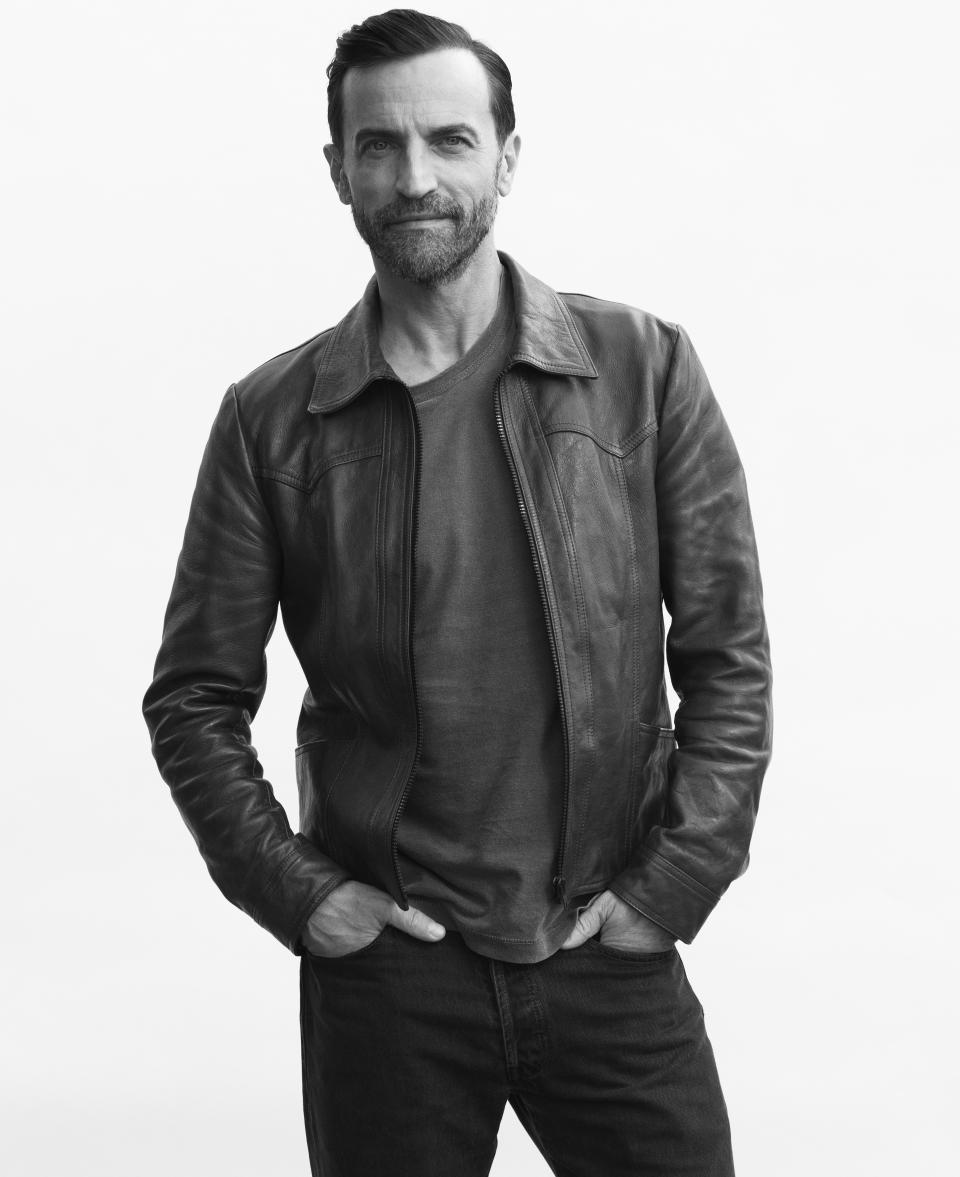
Launch Gallery: Louis Vuitton RTW Spring 2024
Best of WWD

